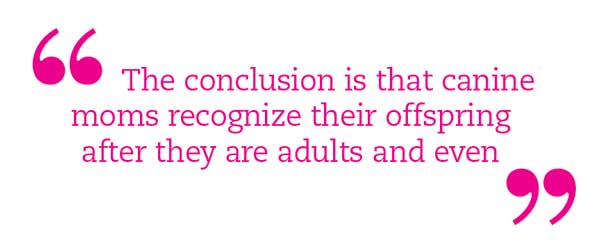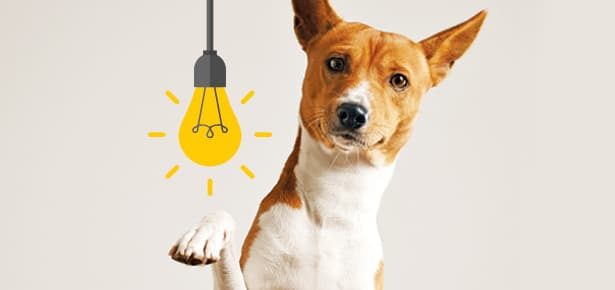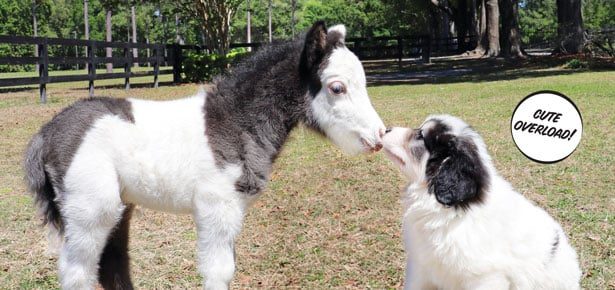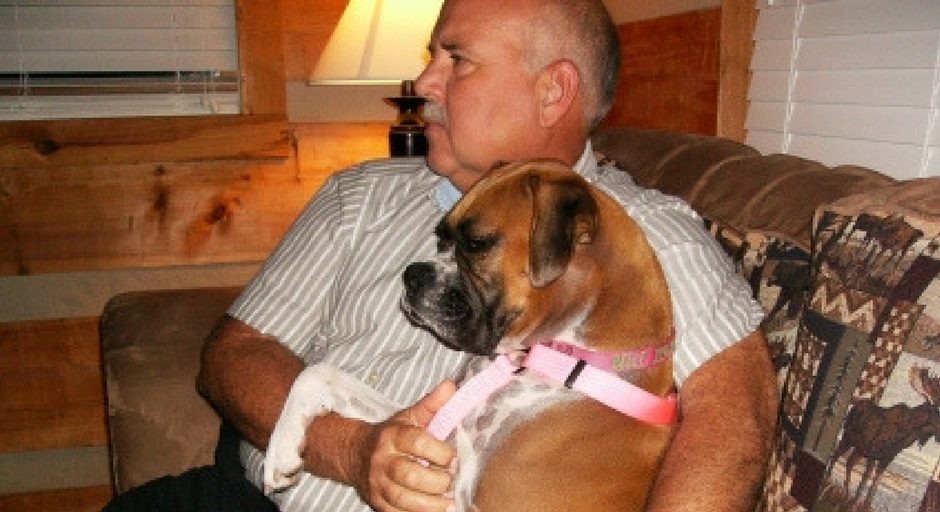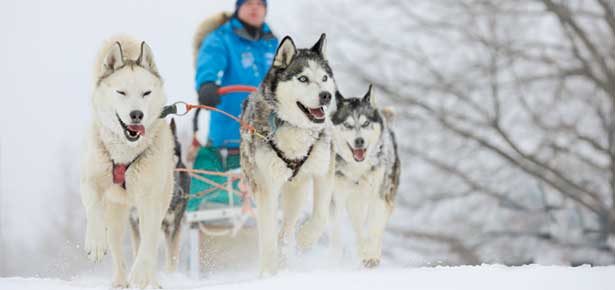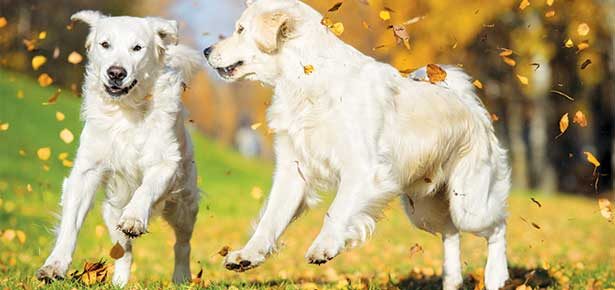
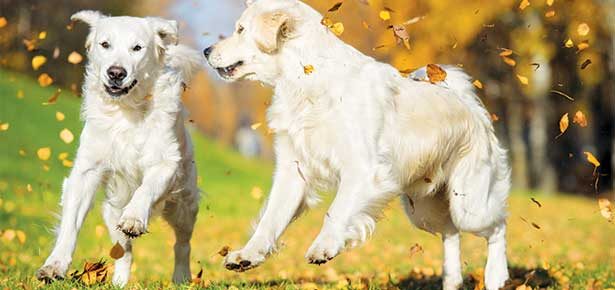
Family Matters
Ever wonder if adult dogs would recognize their mothers or siblings? The results are in!
I was at a gathering of emeritus faculty members at my university, and a small group of us were standing around drinking coffee and nibbling on cookies while discussing matters that were neither political, philosophical nor earthshaking. At one point during the conversation one of my colleagues took the opportunity to pose a question. She said, "I'm going to visit my dog's breeder this weekend and my husband and I were debating whether Siegfried [her Labrador Retriever] will remember his mother, Ashley. Since I am surrounded by behaviourally knowledgeable people I was wondering if any of you had an opinion?"
The first response came from a behavioural biologist who mused, "Well, I can't imagine that the DNA of dogs has changed all that much from the DNA of the wolves that they descended from. The social hierarchy in a wolf pack is really based on family structure. It is set up so that the parents hold the highest status and are the pack leaders. That means that the pups must have an inherited ability which allows them to recognize and remember their mother simply because, for the pack to function well, her status must be recognized and she must be obeyed. I wouldn't be surprised if the recognition of an individual's parents also comes with a sense of kinship and affection. On the flip side, the mother should recognize her own offspring since she has gone through a period of rearing them when her whole focus is on guarding, nourishing, and protecting the pups.”
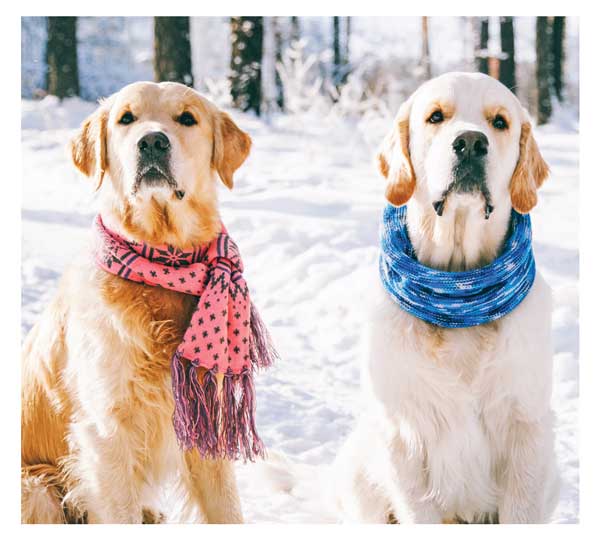
Right Inset Photo by photo_mts/bigstock.com
Then she added an interesting twist to her argument, saying, “I am also struck by the fact that there are some behaviours that seem to be incompatible with the idea that the dogs do recognize their mothers. In particular it seems to me that dogs demonstrate that they lack any recognition of their biological relatives by violating basic social psychological principles. I'll give you the example which convinced me. When my dog was about three years of age, he met his mother again. Although he seemed happy to see her it took less than half an hour before he was trying to mate with her! It seems to me that this is something which he certainly would not do if he recognized her as his mother.”
I felt a poke in my ribs from another faculty member who is also a long-time friend. I looked at him and he asked in a questioning tone, “Certainly you must have run into some kind of real empirical data which can answer this question?”
It took me a few moments to scrounge through my memory, but I did manage to recall a convincing set of experiments which were done a while back by Peter Hepper of the School of Psychology at Queens University of Belfast in Northern Ireland published in the journal Behavioural Processes, the study involved a number of litters of puppies—multiple sets of Labrador Retrievers, Golden Retrievers, and German Shepherds—and their mothers. At the time of testing the pups were aged between four and five-and-a-half weeks of age.
To assess whether puppies recognize their own mothers, two wire enclosures were placed at the end of a room. The puppy's mother was placed in one of these, while a female dog of the same age and breed was placed in the other. A puppy would enter at one end of the room and the experimenter recorded which of the areas he went to first and how long he or she spent attending to the dog in that place. The results were unambiguous, with 84 percent of the puppies preferring their own mother.
The second experiment modified the situation by placing puppies from the test pup's own litter in one of the enclosures and puppies of the same breed, age, and gender in the other. Again the pups showed recognition of their own relatives by preferring their siblings 67 percent of the time.
Hepper went on to show that it is scent that cued the recognition of the test puppies’ biological relatives. This was done by repeating the experiments, only now, instead of having an actual live dog in each of the wire pens, he used a large square of toweling that the target dogs had slept on for two days. The results were very similar to the previous experiments. When pups were given a choice of a cloth infused with their mother's odour versus one infused with the odour of a similarly aged, unfamiliar female of the same breed, 82 percent showed a preference for the scent of their mother. When pups were given a choice of a cloth infused with their siblings’ odour compared to one infused with the odour of a dog of similar age and breed but from a different litter, 70 percent showed a preference for the scent of their littermates.
The results of these two experiments clearly show that young puppies recognize their own mother and littermates, and it also shows that this recognition is based upon scent cues.
However, the question which was actually being raised by my colleague is whether, when the pups grow into adult dogs, they still recognize their biological mother. The answer to this requires that the tests be done on adult dogs rather than young puppies. Luckily, Hepper also gathered a set of dogs that were approximately two years of age. These dogs had been separated from their mother when they were around eight weeks of age and had never seen her again up to the time of testing. He now repeated the previous set of experiments, starting with an assessment of whether, based upon scent alone, the canine mothers still recognized their offspring after all of this time apart.
The results were quite clear, with 78 percent of the mothers sniffing the cloth containing the scent of her offspring longer than they sniffed the scent of an unfamiliar dog of the same breed, age, and gender. The conclusion is that canine moms recognize their offspring after they are adults and even following a long separation.
To see whether the offspring still recognize their mothers, the experiment was revised. The target scent was now the dog's mother compared to another female dog of the same breed and age. The results were almost the same as in the case of the mothers recognizing their offspring, with 76 percent of the dogs showing a preference for the cloth infused with their mother's scent. This was impressive because the puppies had by now grown into adults and had not seen their mother for around two years.
“So,” I went on to explain to my colleague, “at least as far as the data is concerned, it appears clear that a dog, even as an adult, will still recognize its biological mother—however it does not tell us how that former puppy, having now reached adulthood, will act around its mother once they are finally reunited. Contrary to the beliefs of our social psychologist here, the fact that a male offspring might try to mate with his mother during their reunion should not be taken as evidence that he has failed to recognize her as his parent. Rather than demonstrating that he is not aware of his familial relationship to his mother, it simply demonstrates the fact that dogs do not have the same morality system that is accepted by people.”
Join the newsletter and never miss out on dog content again!
"*" indicates required fields
By clicking the arrow, you agree to our web Terms of Use and Privacy & Cookie Policy. Easy unsubscribe links are provided in every email.
